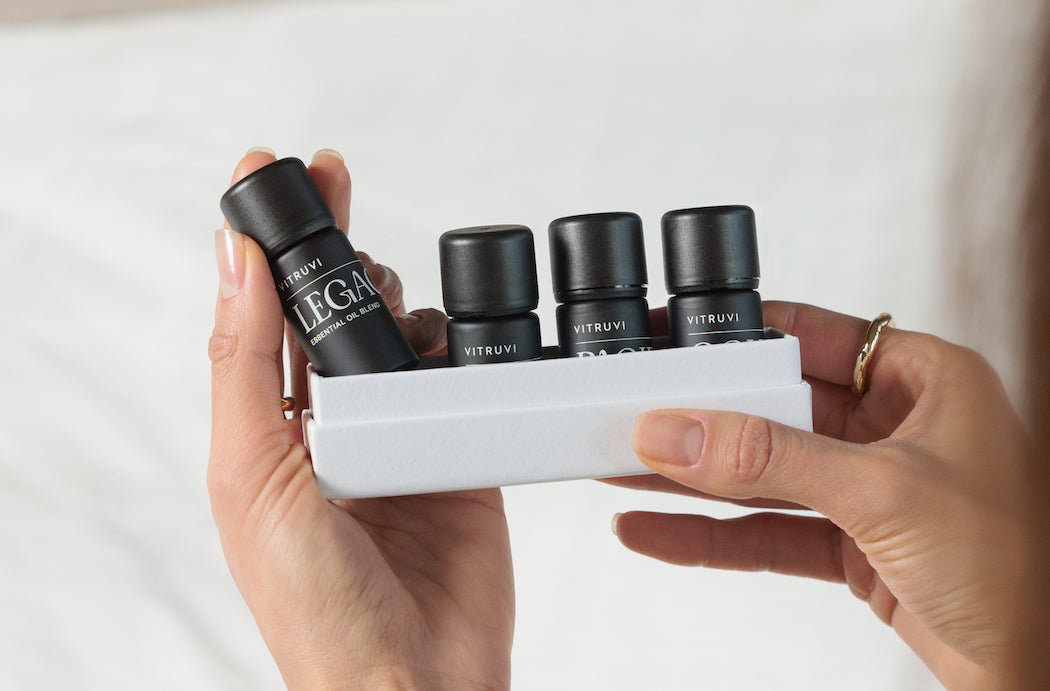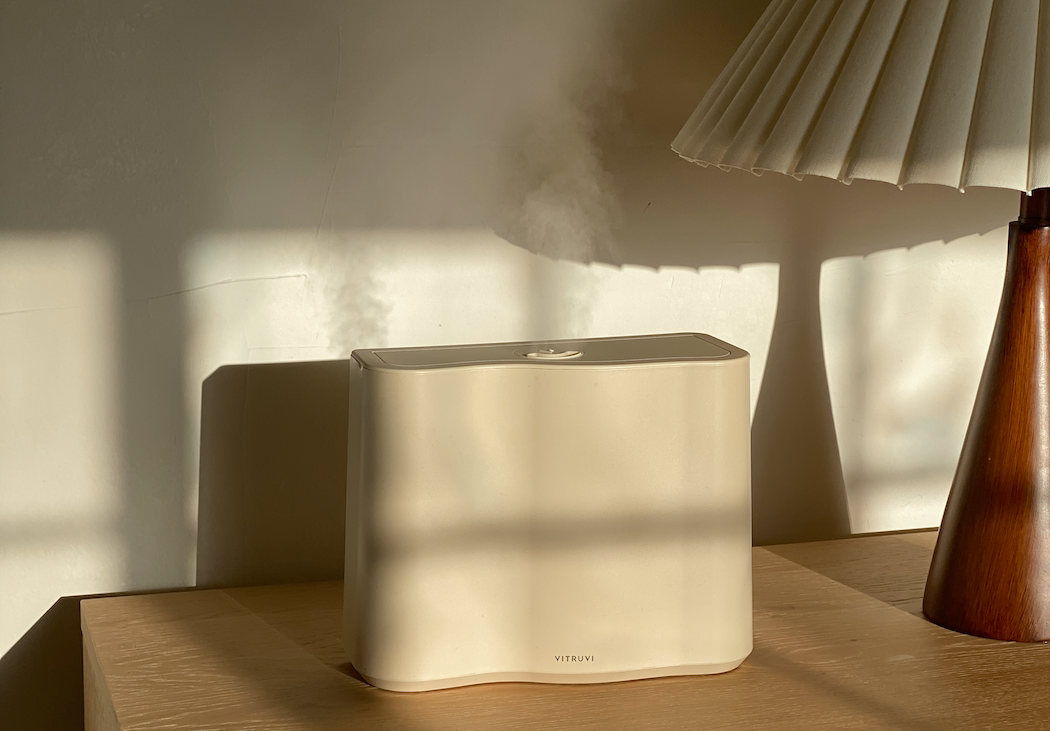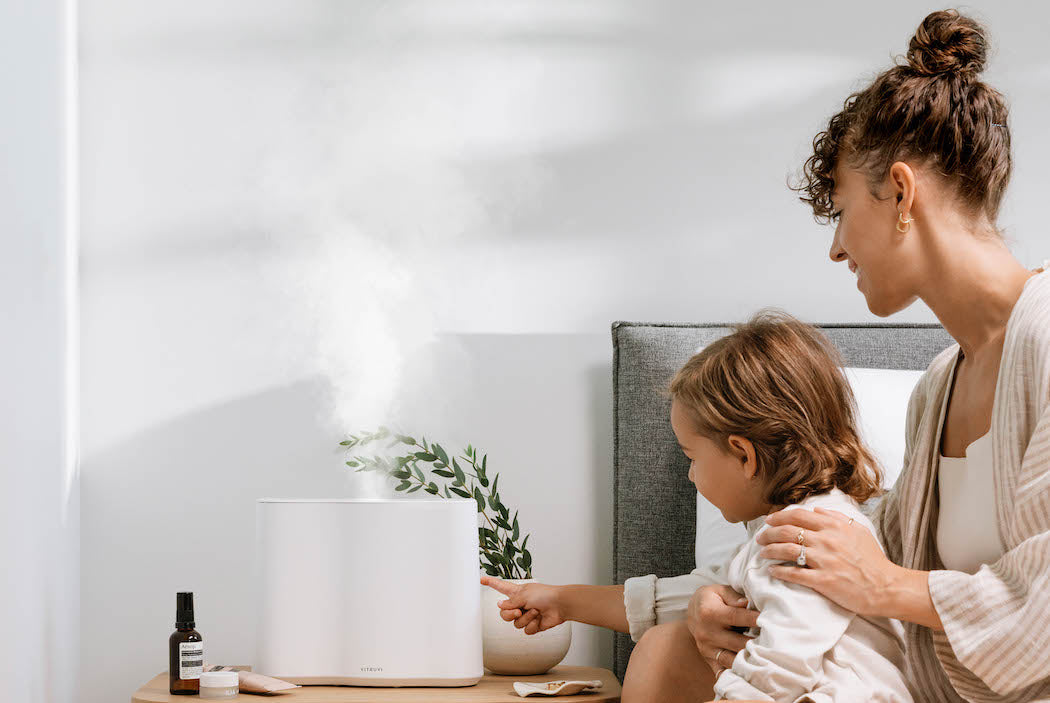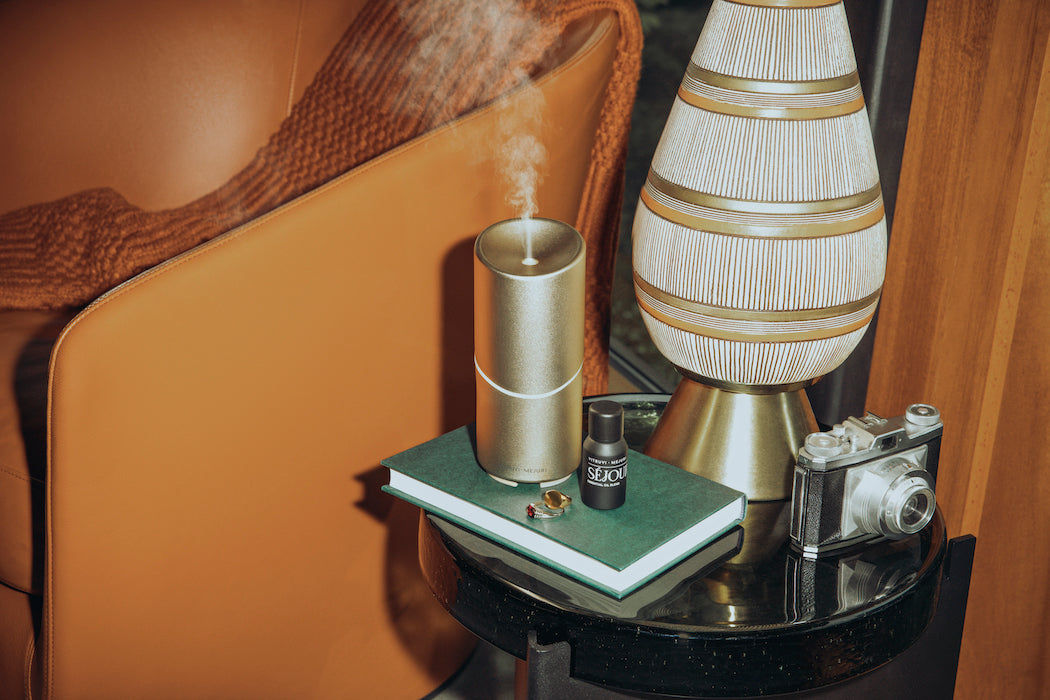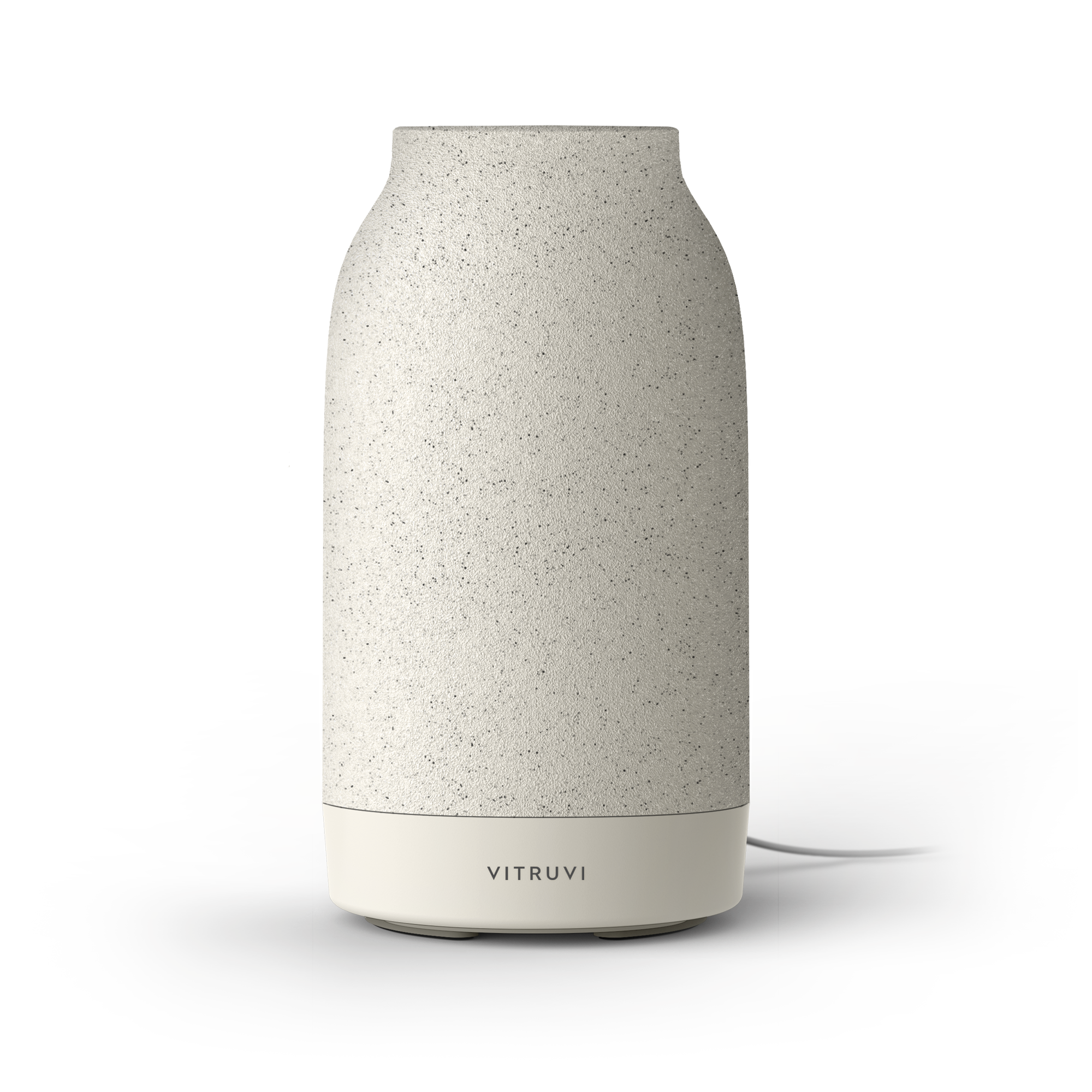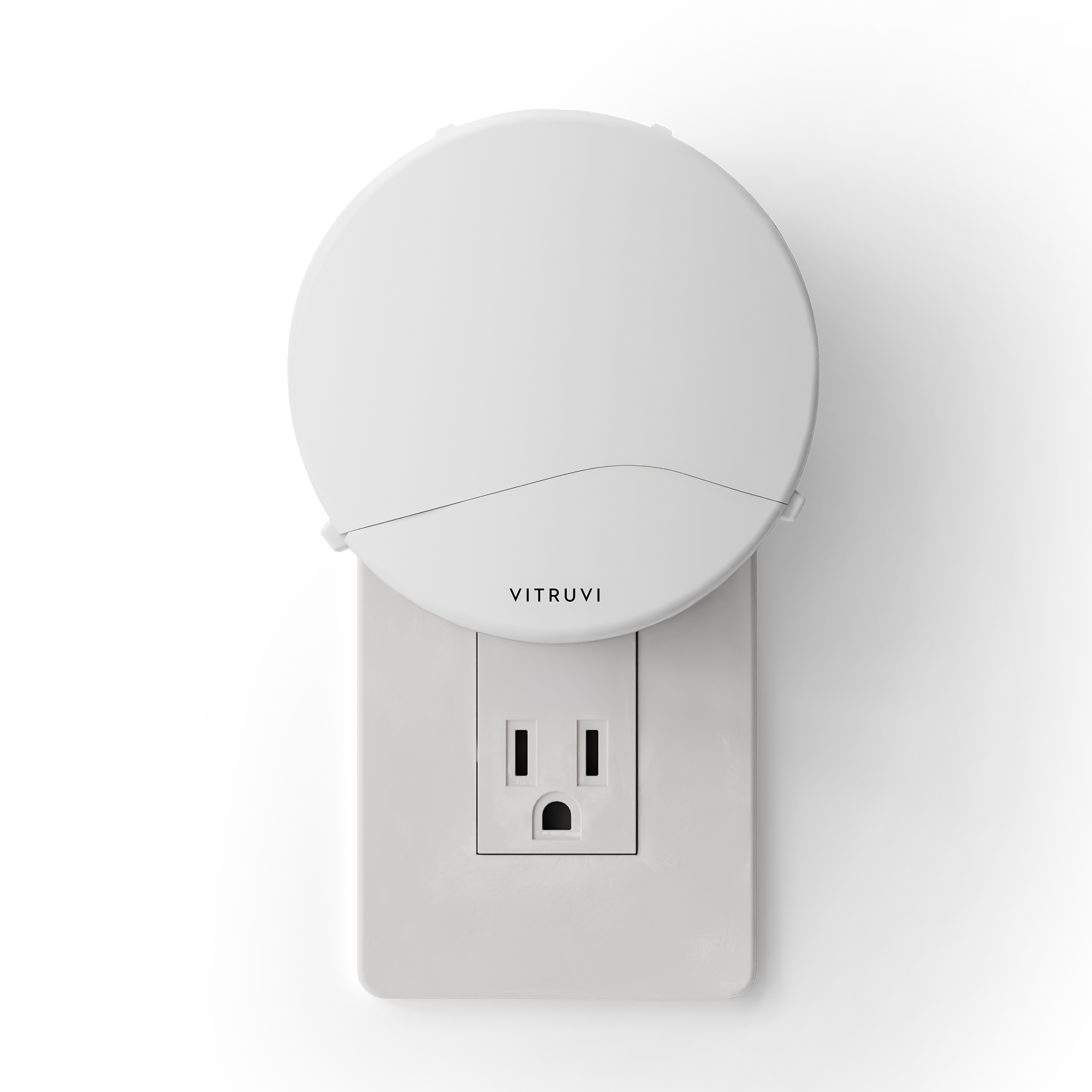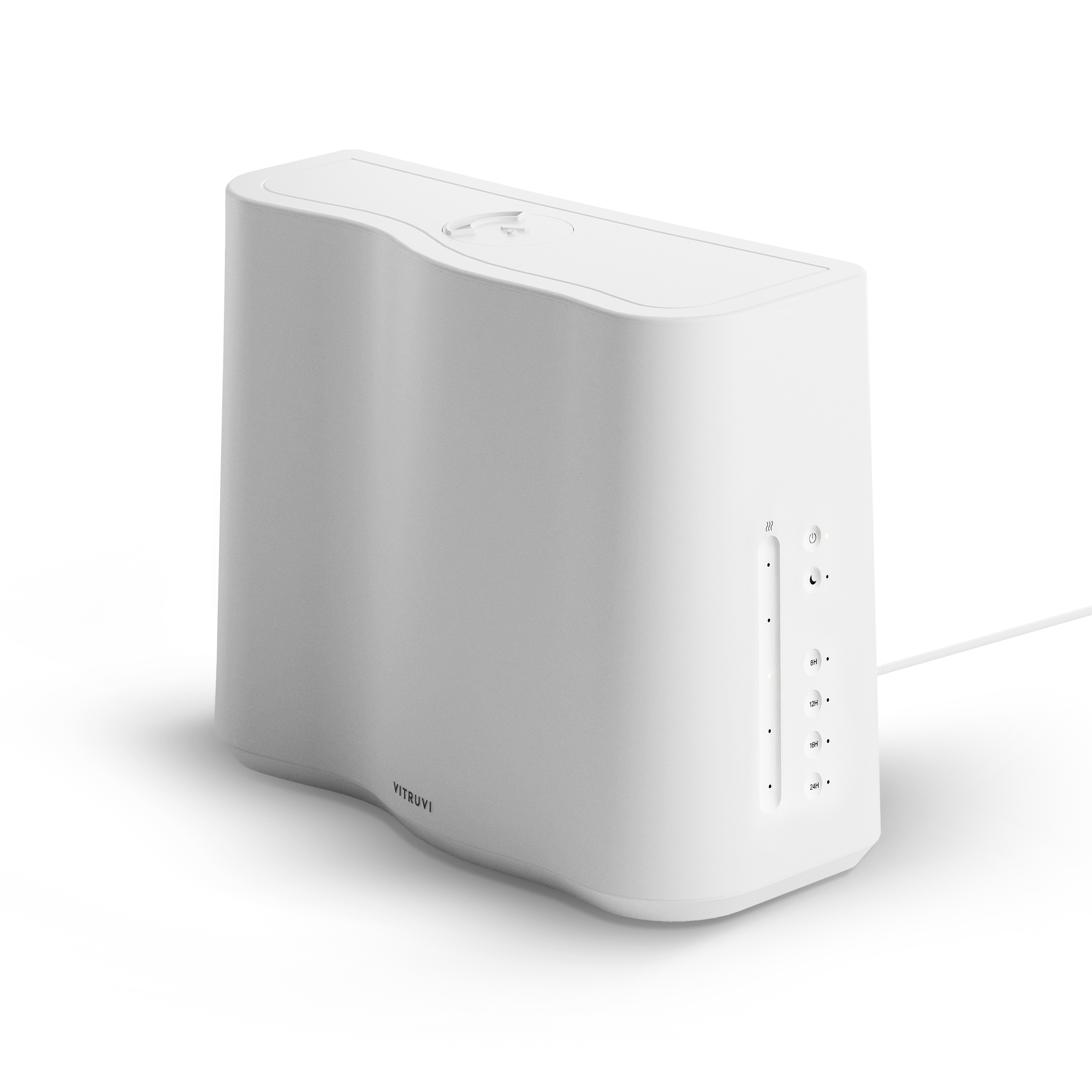The clean movement has taken over many facets of our lives, inspiring us to investigate what’s in our products—everything from the cream we put on our skin to the food we put in our bodies. But one industry remains ripe for disruption, and that’s where vitruvi comes in.
“The traditional home scenting industry hasn’t changed since its inception in the 1940s, and today continues to use toxic chemicals, fillers, and synthetic fragrances to mask odor,” says vitruvi CEO and cofounder Sara Panton. “This is truly one of the last categories of the home to have better-for-you alternatives that are as effective and natural as they are beautiful. We’ve seen progressive natural products and brands launched in personal care, home cleaning, cosmetics, and homewares—but natural air care continues to lack a better alternative for people and for the planet.”
Air is all around us, and yet, we know very little about it—especially when it comes to the home. There are many things that can contribute to indoor air pollution, from our mattresses to our paint. But even certain scent products can have a negative effect on our homes and our health; that’s why providing a clean, safe scenting alternative is central to vitruvi’s mission.
“This company started in our apartment and has always been focused around the home,” Panton continues. “We want to flip the narrative and the way we help people scent their homes by making the air light; it should be a canvas for scenting your home with a range of aromas that are evocative and more dynamic than what has been traditionally sold. The products currently available are not beautiful or made of quality materials. At vitruvi, we are here to level up this industry: making it beautiful, natural, effective, and soulful.”
That’s why you won’t find these ingredients in vitruvi products.
Synthetic fragrance and perfumes
Synthetic fragrance is a general term for non-natural chemicals that can be found in a slew of personal care products—from perfumes to serums. Beauty manufacturers in the U.S. are not required to list the specific ingredients within the “fragrance” or “perfume” of their products, allowing them to potentially hide harmful components under that moniker.
Sulfates
Sulfates are synthetic chemicals that are used in many personal care products because they help create a lather. Their biggest potential risk is their ability to irritate our skin, eyes, and lungs.
Parabens
Parabens are a chemical preservative often used in cosmetics to keep them fresh and bacteria-free for longer. There is concern around them as potentially acting as hormone disruptors, which could cause skin irritation or even fertility problems. FDA scientists continue to study parabens, but so far they have not concluded there are any negative effects on humans.
Formaldehyde
Formaldehyde is another ingredient that is commonly used as a preservative in beauty and body products. Health Canada has deemed it safe when used in small amounts on the skin; however, they prohibit its use in aerosol products because of its potential for irritation when inhaled.
Phthalates
Phthalates are found in both home and body products to help dissolve other ingredients. According to the CDC, phthalates have affected reproduction in animals; however, more research is needed to determine risks on the human body.
Dyes
Artificial dyes have been linked to various health problems over the years, which is why the FDA currently only approves a small list of them for food and personal products. By contrast, the colors of our oils come from the plants themselves—just how nature intended them.
We breathe in whatever’s in our air, so we might as well make it as clean and safe as we can. So go on: Make The Air Yours.

